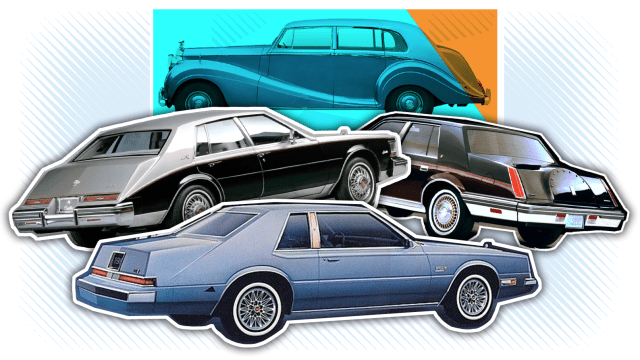I always like it when a little bit of collective, shared insanity takes over a group of people. In the early 1980s, there were many examples of this, from the idea that eating quiche was gendered, to the cubes of Rubik to being forced to push up sleeves on everything you wore, but my favourite example may be how the Big Three all decided that they needed luxury cars with weird-looking trunks. These are sometimes called “bustlebacks,” and I think we should take a moment to consider them, and who pulled this odd idea off best.
The design inspiration for these designs comes from luxury cars of yore, even in the ’80s a long-gone silhouette that once suggested opulence and luxury, a silhouette itself that derived from an earlier era before car trunks were actually integrated into a car’s body and were literally a trunk-mounted behind the passenger compartment.
The vertical shape of the strapped-on trunks became absorbed into the car’s body, and realised its optimal form in cars like the 1946 Rolls-Royce Silver Wraith:
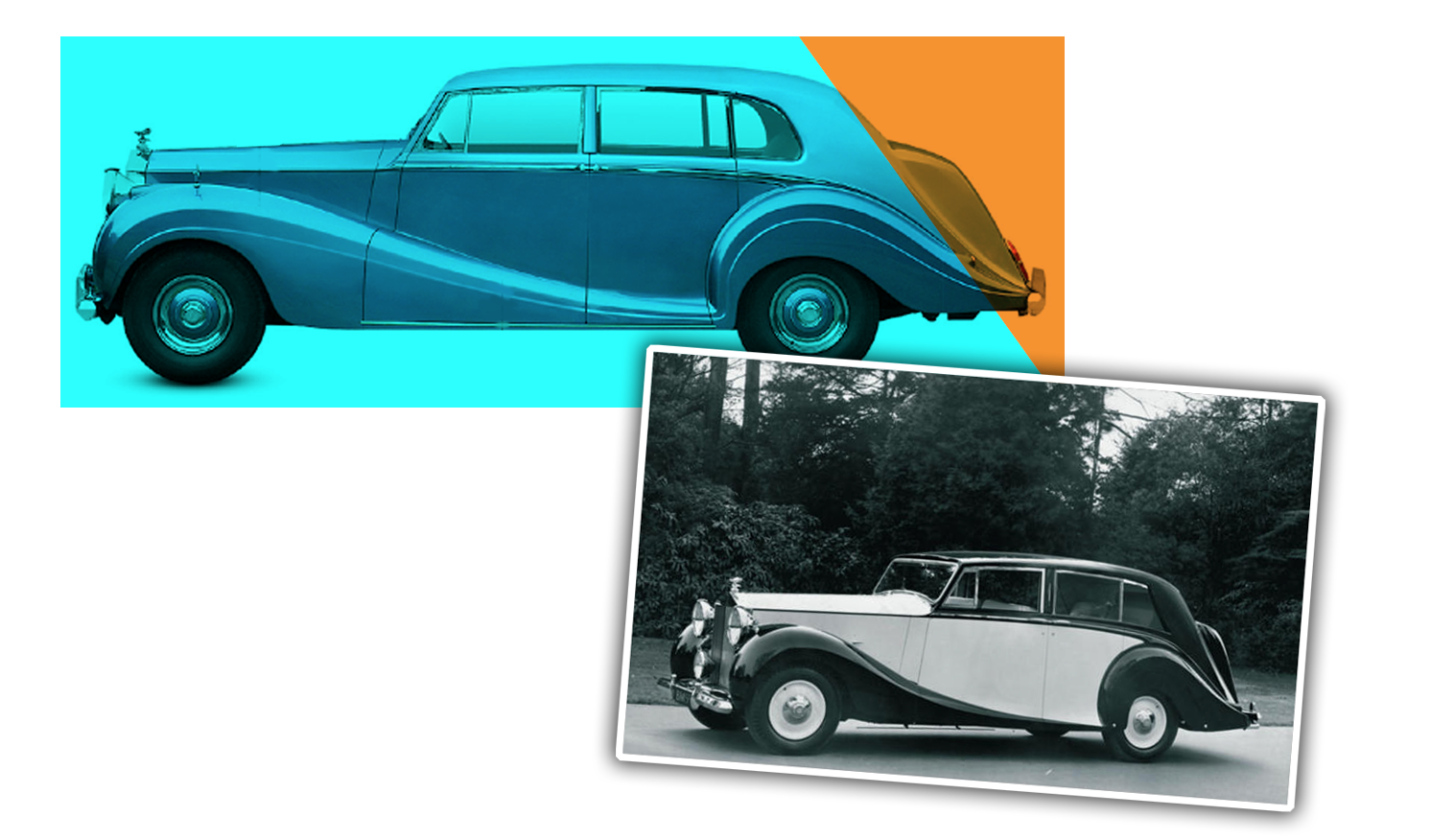
See how the trunk is sort of a sloped oblong, proportionally more vertically oriented, and with a distinct division via the “body” and “trunk” area, delineated with body creases and lines, even though they’re technically all one unit? That’s the essence of the bustleback design.
Cadillac was first to market with its bustleback, the 1980 Seville.
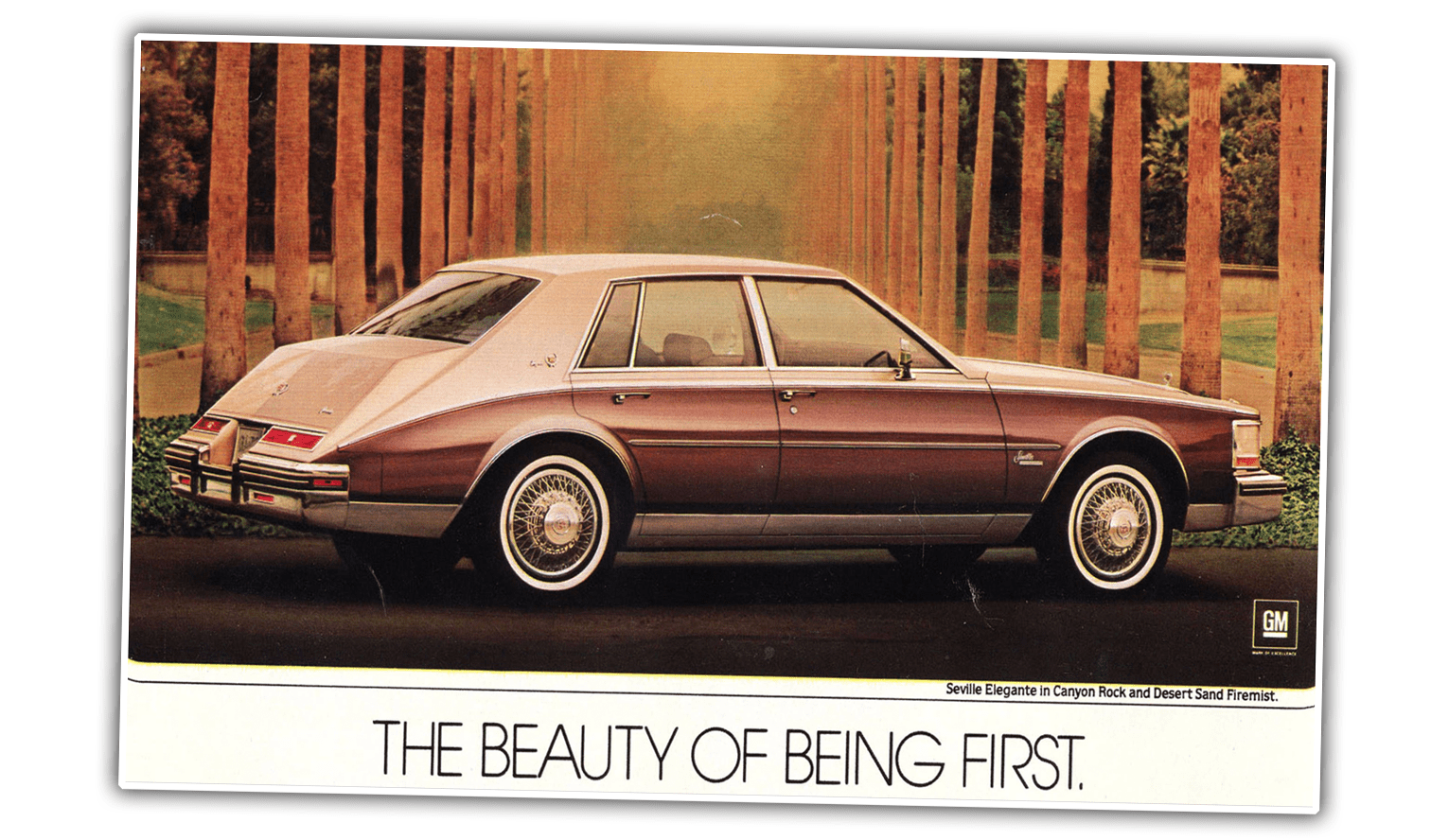
Cadillac leaned hard into the design, with a dramatically chopped-off rear end, and some very clearly emphasised character lines dividing the “body” and “trunk” areas.
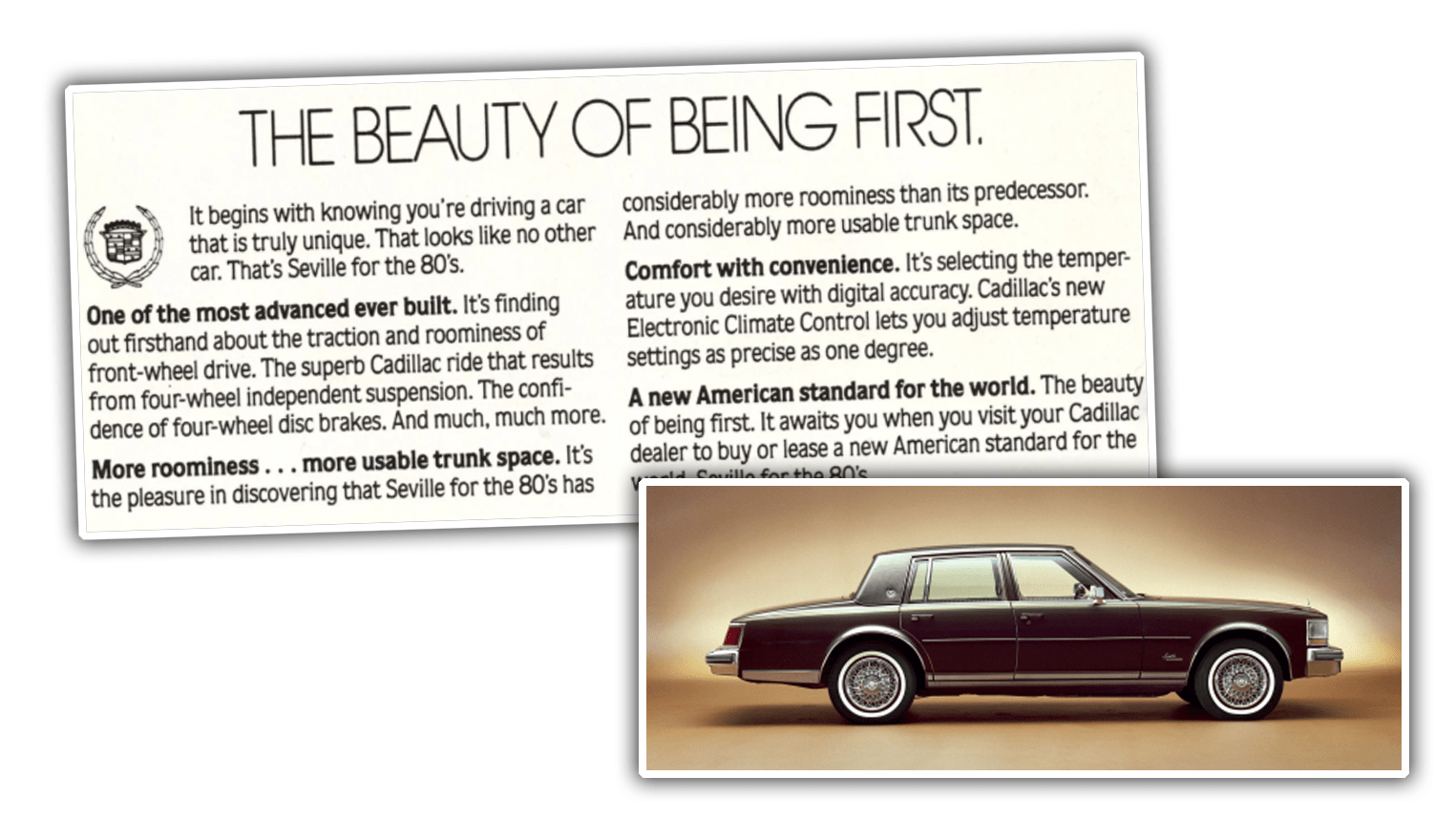
Cadillac’s ad copy advertised “more usable trunk space” compared to the previous Seville design (shown above) which seems counter-intuitive when looking at the comparatively long trunk of the outgoing Seville. In fact, from what I can find online, a 1979 Seville had 0.42 cubic metres of space and a 1980 Seville only had 0.41 cubic metres.
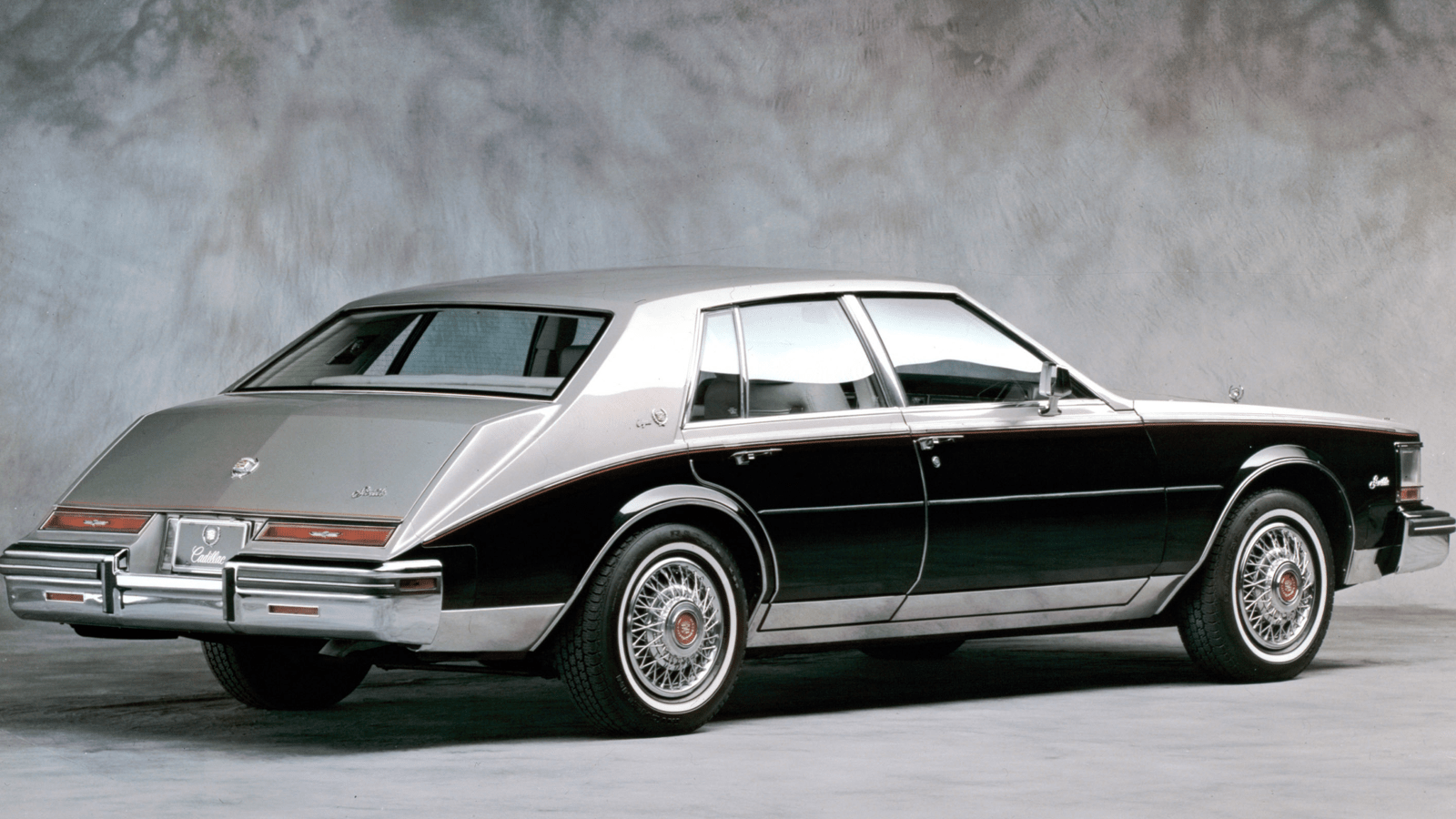
So maybe that “usable” is doing the heavy lifting? Did the 1980 move to a space-saver spare tire?
Anyway, that’s Cadillac’s. Right after the Caddy (but, I’m told, technically designed before the bustleback Seville) came the Chrysler Imperial in 1981.
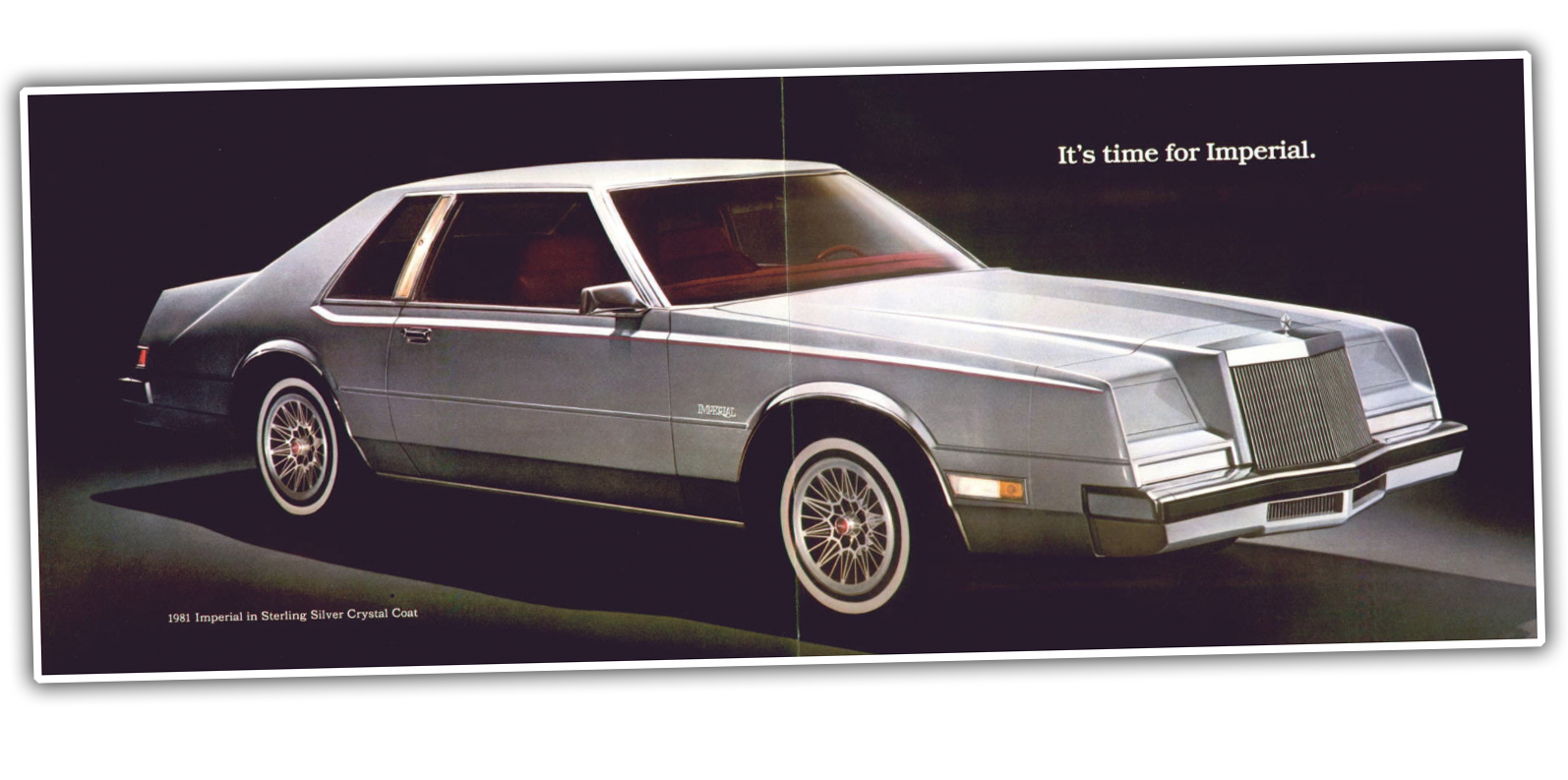
I think of all of these, the Imperial had the most radical styling; it was architectural and modern, sharp edges and dramatic creases, and the approach to the bustleback was, I think, deeply weird, but in an oddly compelling way.
Where I feel Cadillac was going for a classical type of design, the Imperial was looking at the classic influences but filtering them through an ‘80s modernism. This was more like how you might design an Acropolis-themed lunar colony.
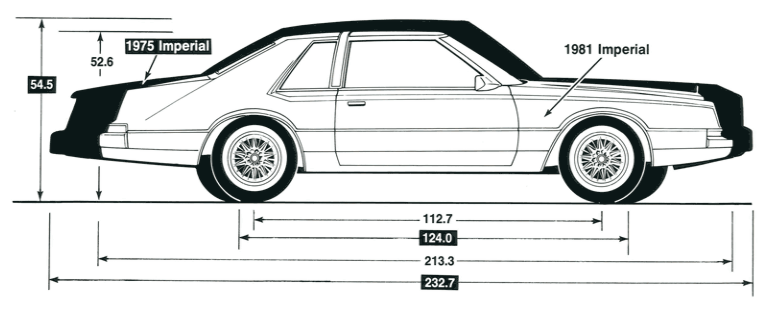
The Imperial was Chrysler’s answer to Cadillac and Lincoln, and while it wanted to match the large size, V8 power, and opulence of those cars, it also wanted to build:
“a new kind of personal luxury car — smaller, more fuel efficient, technologically advanced, and built to a remarkably high standard of quality.”
When you compare it to the size of the ’70s Imperials (look at that diagram above) you can see it was a good bit smaller.
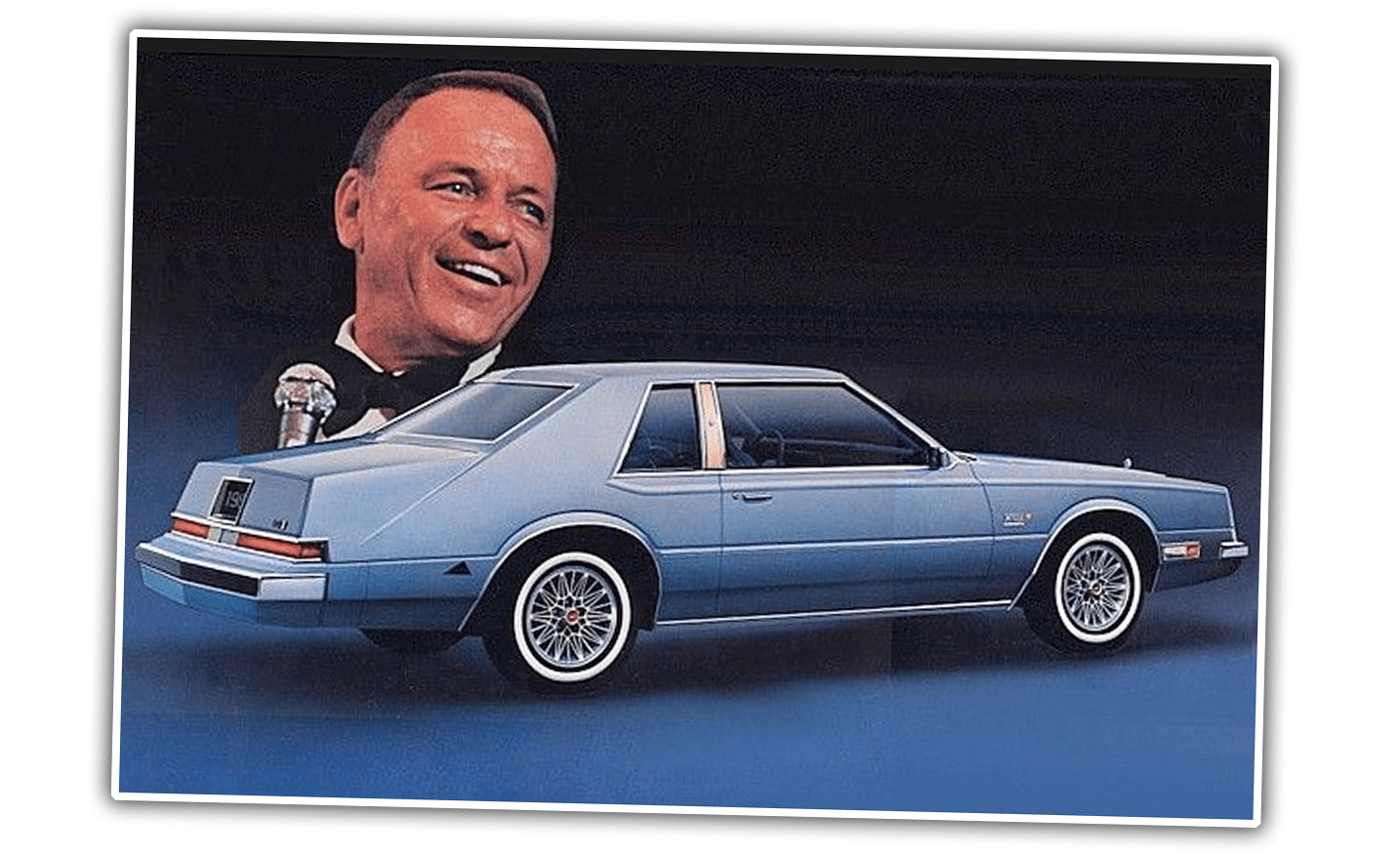
That rear-end design was really, really odd. The full-width, narrow taillights, the licence plate mounted above them, the striking 45-degree angle body lines bracketing the unashamedly boxy trunk and cradling it in between, the floating head of Frank Sinatra, all of these were bold, bold choices.
The last of the Big Three Bustlebacks came in 1982, with the Lincoln Continental.
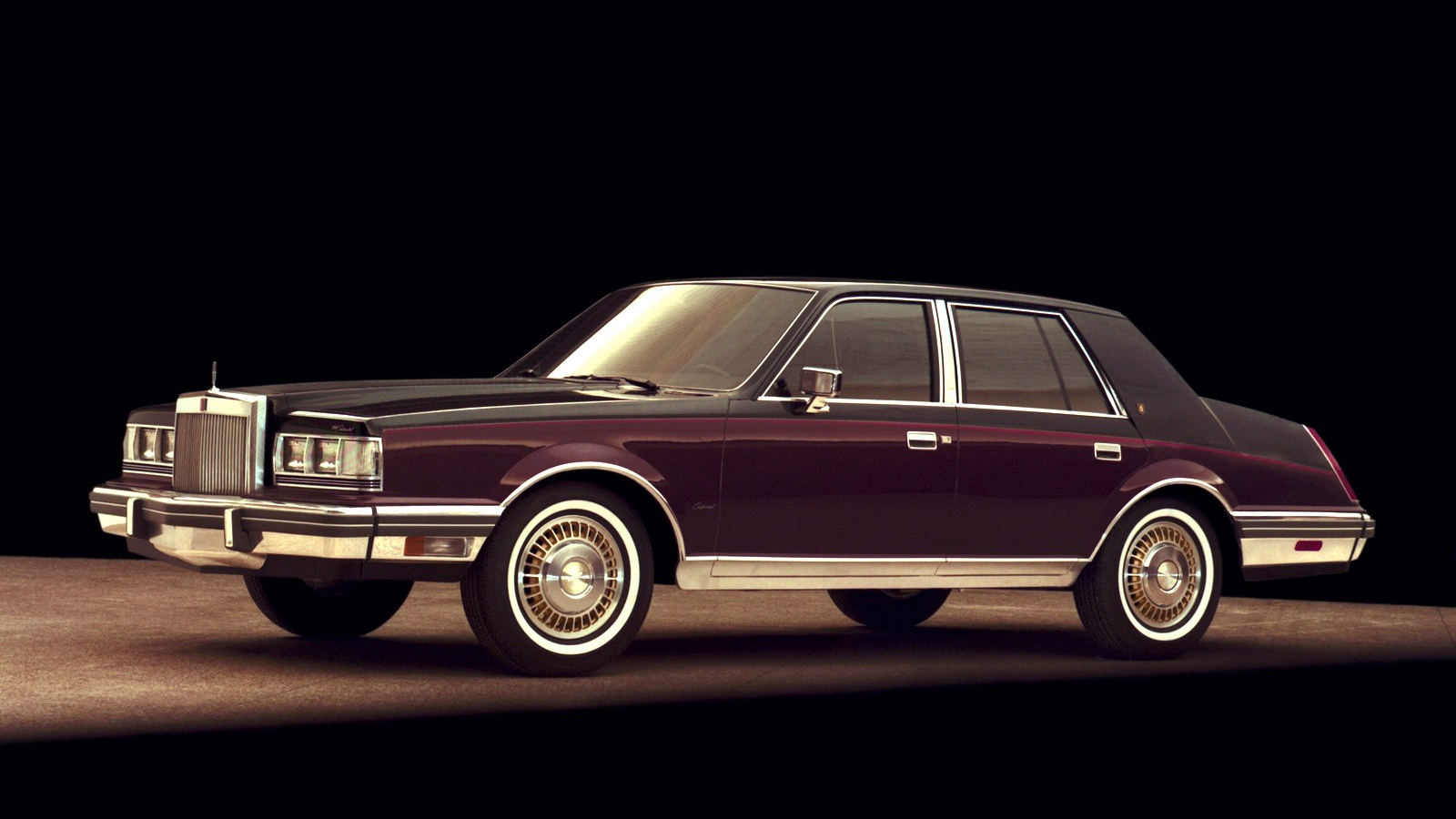
By far the most subtle of the three, the Continental hedged its bets by keeping the fundamental profile and proportions the same as a conventional ’80s large three-box sedan but paid tribute to the bustle with the angled character line tepidly separating trunk from the body, and the dramatically-angled rear cutoff angle that mirrored the character line.
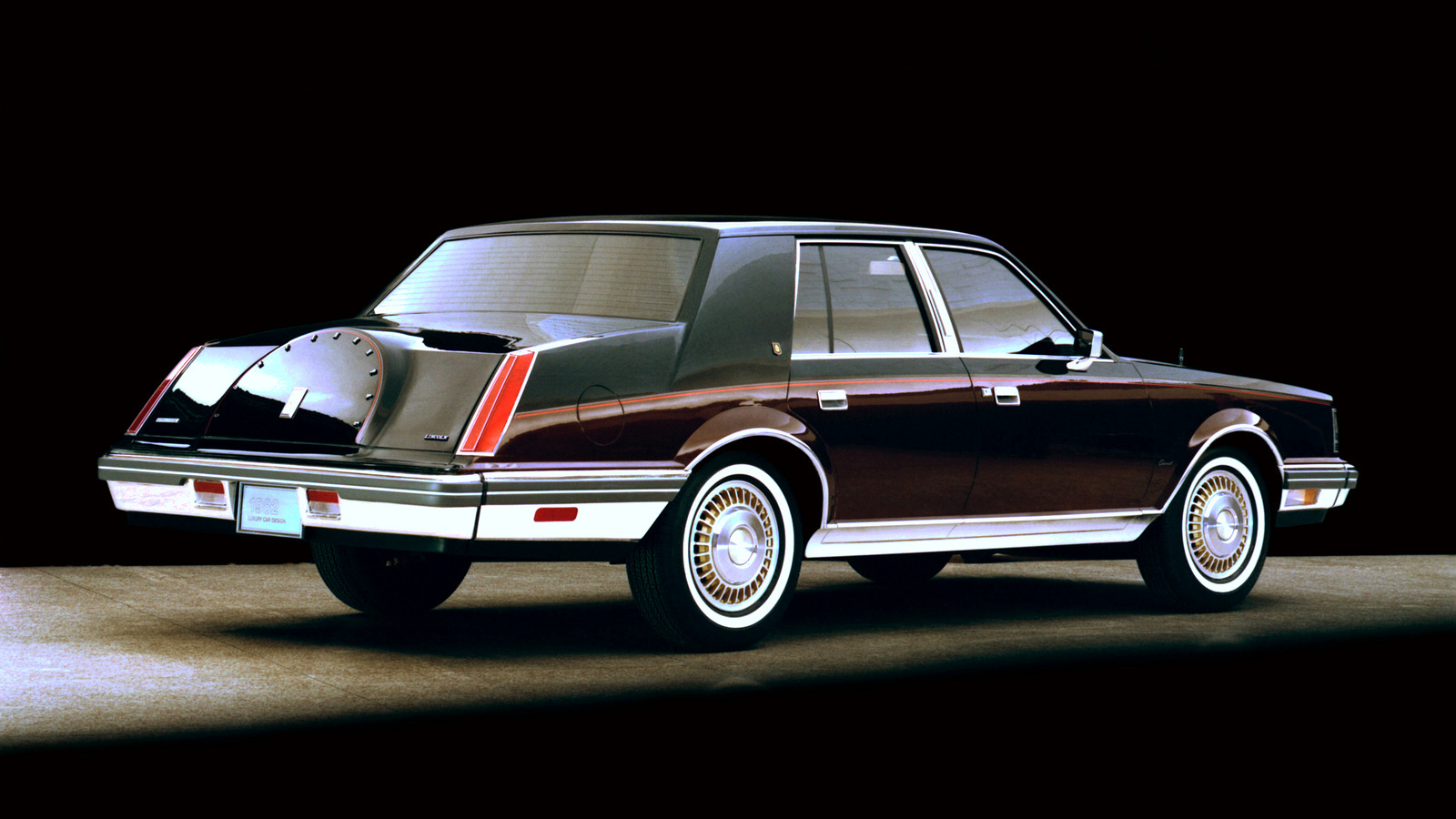
Around the rear, the Lincoln retained the traditional Continental spare tire bump, which maybe gives a clue why Lincoln didn’t dive into the bustleback as deep as GM or Chrysler: it already had a classic-inspired styling affectation, and at this point, it was stacking two separate retro-inspired design cues onto one arse of their car, and that’s a lot to ask of an arse.
So, who did it best? Cadillac definitely did it the most, at least from a standpoint of the closest to the inspirational source, Chrysler I think did it in the most novel way, and likely the most dramatic way. Lincoln, well, I think it phoned it in.
Your turn. Let’s see if we can get some heated discussion in the comments about this! It’s important!
